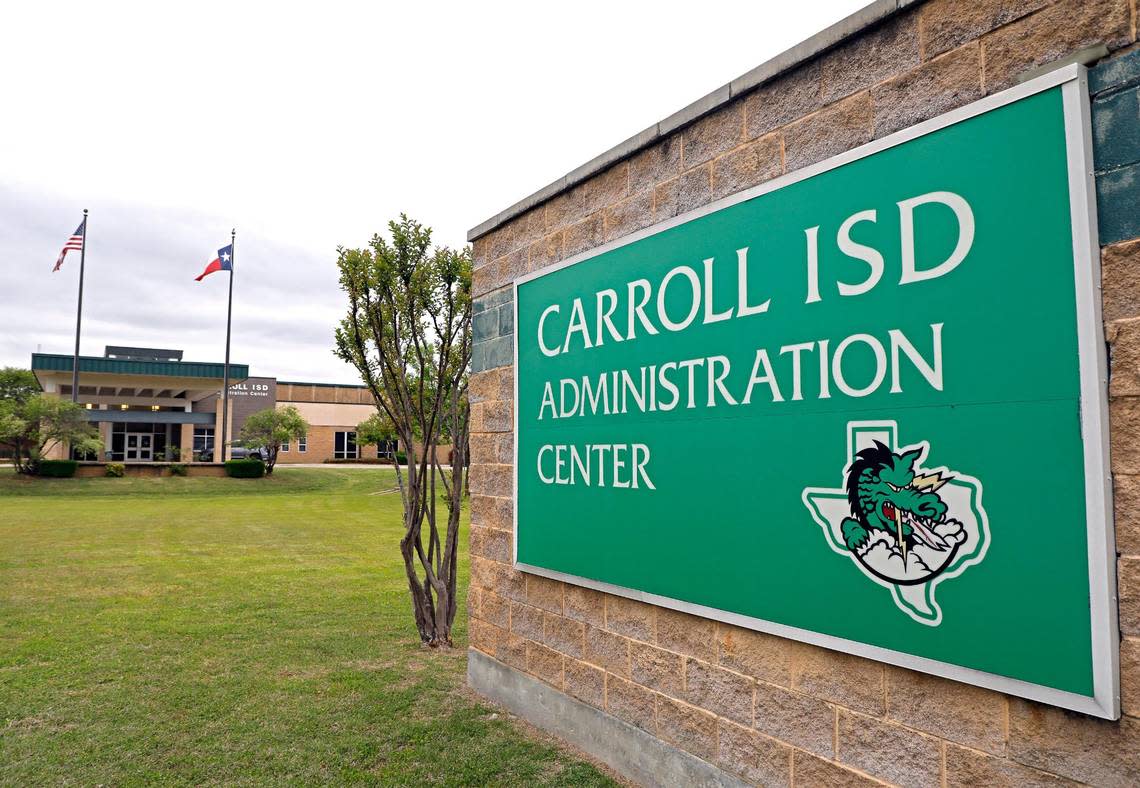Don’t gloss over history, relative of man who witnessed lynching tells Southlake schools

Chris Irvin has dedicated much of his adult life to making sure students learn about the life of his great-grandfather, George Dawson, the grandson of a slave who detailed his story in the book ”Life Is So Good.”
So he was concerned when he got word that Southlake Carroll school officials were reviewing the book, which includes an account of the lynching of Dawson’s best friend.
Irvin, who lives in Duncanville, spoke during Monday night’s Carroll school board meeting, questioning why concerns arose over the first chapter, which includes details about the lynching.
Irvin said he does not want to see parts of history removed or altered.
“My great grandfather was 10 years old when he saw his best friend lynched for a crime he did not commit,” Irvin told board members.
“At the time, neither of them could read and write. It was because of the Jim Crow laws. I thought America had grown past that. When I heard about the removal of a chapter that was set in his memory it seems that we have not moved past the Jim Crow laws. It seems that the truth is scary to face.”
He encouraged the board to look at the good, bad and the ugly aspects of history.
He also asked about opportunities to sit down with board members and Superintendent Lane Ledbetter to discuss ways to “move forward” with the telling of his great-grandfather’s story.
“We obviously value Mr. Dawson,” Ledbetter said.
A lifelong Dallas resident, Dawson died in 2001 at 103. He grew up on the family farm in Marshall in East Texas, and left at 12 to pursue work to help his family.
Dawson broke wild horses, built levees on the Mississippi River, and shoveled dirt into a mule-drawn wagon. He did not learn to read until he was 98.
He later moved to Dallas, where worked for the city, a railroad and a dairy. Dawson also loved traveling and sometimes rode the rails.
A former Carroll school board member suggested that the district name a middle school, built in 2002, after Dawson. The school bears his name, and there is a bronze statue of Dawson in front of the school.
Ledbetter said a teacher was concerned about the first chapter of the book as he wanted to use it for required reading and brought it to a committee for review.
“I can tell you that it was never suggested that this book be banned, it was never suggested that the kids don’t read this book” Ledbeter said.
He said the district wants to look at the best way to present the material that is age appropriate.
“The challenge is, Do you allow seventh grade boys and girls to have that conversation without the facilitation of a teacher?” he said.
Irvin pointed out that his great-grandfather was 10 when he saw his friend lynched.
“My understanding is that middle school age is 12 and 13 years old,” he said.
Irvin asked to have a conversation with Ledbetter, board members and district officials to talk about moving forward to find ways to teach about the history that his great-grandfather witnessed.
Ledbetter said the principal is having that conversation with the teacher and that he would ask her to reach out to Irvin.
Irvin said in an interview that he and his family would visit Dawson Middle School three times a year to welcome students in the fall, provide them with breakfast in January and return at the end of the year to present the George Dawson Award, which exemplifies character.
When asked if he was surprised by the review of the book co-written by his grandfather, Irvin said, “yes and no.”
He described reading about Anne Frank in the seventh grade.
“When I heard about the cancel narrative of the Holocaust, then I said, ‘Yes, I understand the era that we are living in.’ I knew it would be a matter of time before someone made an outcry and said this is very uncomfortable. There is no way of getting around it, you’ve got to read it,” he said.
